Guitar pickups might look like a small part of your electric guitar kit, but they have a massive impact on your tone. They’re the real engines behind your sound — shaping everything from warmth and clarity to aggression and sustain. Ever wonder why your favorite guitarist has such a unique voice on their instrument? A huge part of that signature tone comes down to their pickup choice.
In this guide to the best pickups for your electric guitar kit, we’ll break down how different pickup types color your sound, what makes one style better for certain genres, and how to choose the perfect match for your build. Whether you’re after vintage blues, modern metal, or clean studio sparkle, you’ll know exactly what to look for.
Whether you’re chasing warm blues, tight modern metal, or that clean-but-spicy single-coil sparkle, the right pickup swap can transform your guitar overnight.

Do Pickups Really Matter for Tone? Absolutely.
Pickups might look simple — a row of magnets wrapped in copper wire — but they shape more of your guitar’s voice than almost anything else. Every ounce of warmth, bite, clarity, twang, crunch, and sustain begins right here, in that little magnetic field under your strings.
When your strings vibrate, the pickup turns those vibrations into an electrical signal. That signal becomes your tone once it reaches the amp. Change the pickup… you change the personality of the guitar.
Why Different Pickups Sound Different
Pickups aren’t all built the same, and those differences totally change the sound:
-
Different pickup designs create dramatically different tones — from smooth vintage blues to sharp country twang or aggressive metal punch.
-
Single coils are known for bright, crisp detail.
-
Humbuckers deliver thicker, richer tones with more power and less noise.
-
Windings, magnet type, and coil shape all tweak your tone even further.
Understanding these basics makes it easier to choose the pickup that fits your playing style.
Now let’s break down the two most common pickup types
— single-coil and humbucker —
so you can match the right voice to your style.
Think of Pickups Like the Vocal Cords of Your Guitar
Every guitarist has their own “voice” — that signature character you recognize instantly. For your guitar, pickups are that voice.
Swap them, and your guitar can sound like a completely different instrument.
👉 👉 Want a deeper dive into each type?
Check out our guide on Understanding Humbucker vs Single-Coil Pickups in Kits.
Do Pickups Really Matter for Tone? Absolutely — and Here’s Why.
Your guitar’s pickups act like tiny translators. Every vibration from your strings gets interpreted through them before it ever reaches your amp. Swap the translator, and the message changes completely.
A pickup can make your guitar sound smoother, sharper, louder, darker, brighter, or more aggressive — sometimes instantly.
That’s why two identical guitars can feel worlds apart with nothing but a pickup change.
How Pickups Actually Shape Your Tone (Simple Breakdown)
Pickups don’t just “hear” your strings — they translate their vibrations into an electrical signal.
And the way they’re built changes everything about that translation.
The diagram below shows what’s really happening under the strings:
the vibration disturbs the magnetic field, the coil turns it into a signal, and that becomes your guitar’s voice.
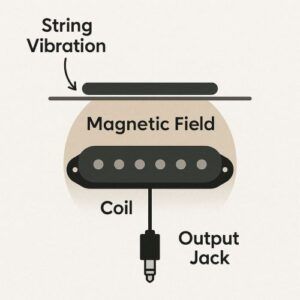
And this is why even a small pickup change on your kit guitar can make a huge impact in your sound:
-
Different pickup designs create wildly different tones — from warm, smooth blues to sharp country twang or aggressive metal punch.
-
Single coils give you bright, clear detail.
-
Humbuckers deliver thicker, richer sound with less noise.
-
Windings, magnet type, and coil shape tweak your tone even more.
Bottom line: pickups are the vocal cords of your guitar.
Swap them, and the whole “voice” of your instrument changes.
There’s way more to pickup tone than just “single-coil vs humbucker.”
Single-coils give you brightness and clarity, while humbuckers deliver thicker,
fuller punch — but coil wind, magnet type, and output level all shape the voice too.
Understanding these basics sets you up for choosing the perfect pickup for your style.
🎸 Best Pickups for Your Electric Guitar Kit (Top Recommendations)
🔥 1. Seymour Duncan JB (SH-4) – High-Output Humbucker
Perfect for: Hard rock, metal, powerful leads, heavier styles
Why it’s great:
✓ Tight low end
✓ Singing sustain
✓ Massive output
✓ Extremely popular & reliable
🌟 Amazon Product Suggestion:
✔️ Seymour Duncan SH-4 JB Model Bridge Humbucker
(Black)
The JB Model delivers a big, full low end, a focused midrange bump, and a clear, singing top end that keeps single-note leads articulate even under heavy gain.
Whether you’re building a hot-rodded super-strat or upgrading a budget kit, the SH-4 instantly transforms your tone from “meh” to pro-level.
It pairs perfectly with almost any neck pickup and works great for anything from classic rock to metal, punk, grunge, fusion, and modern blues.
If you want versatility and attitude in the bridge, this is the one.
Why It’s Great
✔️ Signature Seymour Duncan clarity & power
✔️ Tight lows with added chunk for huge rhythm tone
✔️ Upper-mid presence that cuts through any mix
✔️ Balanced enough for clean styles, brutal enough for high-gain
✔️ The world’s most popular aftermarket bridge humbucker
✔️ Perfect upgrade for guitar kits — dramatic improvement over stock pickups
🔥 2. Seymour Duncan ’59 Model – Vintage-Style Humbucker
Perfect for: Blues, classic rock, clean tones, versatile builds
Why it’s great:
✓ Warm, rich lows
✓ Smooth highs
✓ Great for both rhythm + leads
✓ Vintage PAF character
🌟 Amazon Product Suggestion:
✔️ Seymour Duncan SH-1b ’59 Model Neck Pickup
(Black)
The ’59 delivers round lows, sweet mids, and a clear, airy top end
that never gets muddy — even with darker tonewoods.
It’s built with a vintage-output wind, Alnico V magnet, and classic Seymour Duncan clarity that makes chords bloom and lead lines sing.
If you want a neck pickup that does everything well —
jazz, blues, rock, fusion, and even high-gain solos — this one nails it.
It keeps definition, stays warm, and gives your guitar a “grown-up,” professional voice.
Why It’s Great
✔️ Classic PAF warmth with modern clarity
✔️ Smooth lows and sweet mids for rich, expressive tone
✔️ Stays articulate — no mud, even with heavy gain
✔️ Perfect match for the SH-4 JB bridge pickup
✔️ Versatile enough for clean, crunch, and high-gain playing
✔️ Ideal upgrade for guitar kits — massive improvement over stock neck pickups
🔥 3. Fender Tex-Mex Single-Coils – Hot, Spicy Strat Tone
Perfect for: Blues, rock, country, clean-but-biting tones
Why it’s great:
✓ Bright but not harsh
✓ Slightly overwound for extra punch
✓ Killer bluesy growl
🌟 Amazon Product Suggestion:
✔️ Fender Tex-Mex Stratocaster Pickups
Set of 3 (White)
The Tex-Mex set uses Alnico 5 magnets and slightly hotter winds, giving you snappy treble, strong mids, and tight bass that cuts through a mix without losing that Fender single-coil character.
They shine for clean styles, but really come alive when pushed…
think crisp edge-of-breakup, tube-amp sizzle, and fat blues leads.
Perfect for upgrading a Strat-style kit or any S-type guitar that needs more attitude while keeping that unmistakable Fender DNA.
Why They’re Great
✔️ Overwound Strat pickups for extra output & bite
✔️ Classic Fender sparkle with added midrange punch
✔️ Alnico 5 magnets for bright, articulate tone
✔️ Excellent for blues, rock, country, and Tex-style drive
✔️ Complete 3-pickup set — neck, middle, and bridge
✔️ Huge upgrade over stock S-style kit pickups
🔥 4. Fender Vintage Noiseless Single-Coils – Quiet + Classic
Perfect for: Clean players, studio builds, anyone who hates hum
Why it’s great:
✓ Hum-free single-coil tone
✓ Smooth highs
✓ Excellent clarity
🌟 Amazon Product Suggestion:
✔️ Fender Vintage Noiseless Stratocaster Pickup Set
Aged White (3 Pickups)
Built with Fender’s stacked-coil noiseless design, these pickups deliver sparkling highs, tight bass, and scooped mids, giving you that unmistakable Strat character without the background hiss.
They’re perfect for blues, surf, funk, worship, classic rock…
anything that needs crystal-clear single-coil tone with modern noise control.
The aged-white covers give them a vintage aesthetic that looks incredible on any Strat-style kit, especially relic, cream, or off-white builds.
Why They’re Great
✔️ Noiseless stacked-coil design — zero hum, vintage tone
✔️ Sparkling Strat highs with scooped mids and tight bass
✔️ Perfect for clean, funk, blues, and edge-of-breakup tones
✔️ Great upgrade for Strat-style DIY kits
✔️ Aged white covers add a classic, vintage-correct look
✔️ Fender’s premium-quality noiseless line
🔥 5. EMG 81/85 Active Set – Modern Metal Power
Perfect for: Metal, high-gain builds, ultra-tight tone
Why it’s great:
✓ Insane clarity under distortion
✓ Tight low end
✓ High output without mud
🌟 Amazon Product Suggestion:
✔️ EMG 81 Active Guitar Humbucker
Black (Bridge/Neck)
The EMG 81 uses a ceramic magnet and active preamp to create a high-output, razor-sharp tone that slices through dense mixes like a chainsaw.
It delivers focused mids, tight low end, and laser-bright highs without unwanted noise or muddiness.
This is the classic choice for aggressive players — metal, hard rock, djent, high-gain solos, and anything that demands precision and power.
Works great in the bridge or neck, depending on how brutal you want to get.
Why It’s Great
✔️ Active design: massive output with zero noise
✔️ Ceramic magnet for ultra-tight low end & crisp attack
✔️ Perfect for metal, high-gain rock, and modern heavy styles
✔️ Incredible sustain and note definition
✔️ Works in bridge or neck positions
✔️ Huge upgrade over stock pickups in guitar kits
Pickup Position: A Key Factor in Shaping Your Tone
Pickup position is more than a technical detail — it’s one of the biggest tone-shapers on your guitar.
Neck position:
Warm, round, smooth. Perfect for solos, jazz licks, and anything buttery.
Bridge position:
Bright, tight, aggressive. Cuts through a mix and gives you that punchy lead bite.
Middle position:
The “in-between” sweet spot. Balanced tone that blends warmth + clarity — super versatile for all-style playing.
Knowing how each position changes the sound helps you choose pickups that match your goals, whether you want warmth, bite, balance, or all three.

Examples of Common Three-Pickup Setups
SSS – three single-coil pickups
SSH – two single coils + one humbucker
HSH – one humbucker – one single coil – one humbucker
These layouts change the feel and flavor of your guitar:
-
SSS: Bright, snappy, classic Strat tones — great for blues, funk, and clean work.
-
SSH: Versatile combo that covers clean sparkle and high-gain bite.
-
HSH: Thick, powerful rock tones with added single-coil clarity in the middle.
Experimenting with these setups is part of the fun.
Blend positions, mix neck and bridge, and try different switching options —
you might find a tone you didn’t even know you loved.
Bottom line: your ideal setup comes down to the sound you want to spotlight. Test a few combinations, find the sweet spot, and your guitar kit will feel custom-tailored to your style.

Single Coil vs. Humbucker: The Great Pickup Debate (Simple + Clear)
When you’re choosing pickups for your guitar kit,
single coils and humbuckers offer totally different voices.
Knowing the difference helps you pick the tone that actually fits your style.

Single Coils
Bright, sharp, and defined. Single coils cut through a mix and shine in blues, funk, country, indie, and clean rhythm playing. Their crisp attack makes riffs stand out — but they also pick up a bit of noise.
Humbuckers
Thicker, fuller, smoother. Humbuckers cancel hum, handle high gain without squeal, and deliver the punchy, powerful tones you hear in rock and metal. They’re great for beefy rhythms and singing lead lines.
Which one is “better”?
There’s no winner — it all depends on your voice as a player.
-
If you want bright clarity → single coils
-
If you want thick, powerful tone → humbuckers
-
If you play a mix of genres → a guitar with both opens up tons of tonal options
Bottom line: choose the pickup that fits the sound in your head. Your guitar kit should match the style you love — and the music you actually play.
***Conclusion…
Choosing the right pickups is key to unlocking the full tonal potential of your electric guitar kit — but it’s only part of the equation. If you haven’t already, check out our step-by-step guide on how to install pickups in your guitar kit to make sure you’re setting them up properly. For those ready to dive into electronics, don’t miss our walkthrough on wiring your kit for optimal performance. You’ll also want to ensure your build is structurally sound by following our advice on setting up the bridge and neck. If you’re just getting started, take a look at tools you’ll need to build your kit. And when problems pop up — as they sometimes do — our guide to common troubleshooting issues has you covered.
The right tone starts with the right choices across every step of your build.
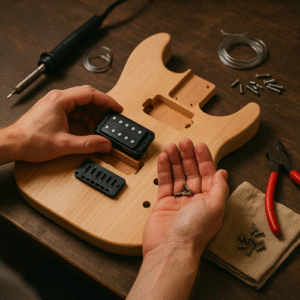
Craft it. Play it. Own it!
Ready to take your guitar passion beyond the workbench?
See how I built GuitarCrafts.com using the training at Wealthy Affiliate — you can do the same.
👉 Build Your First Website With Wealthy Affiliate (Free)
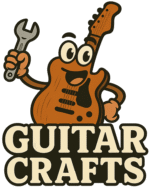

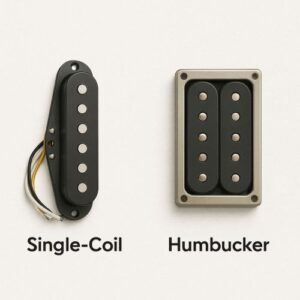

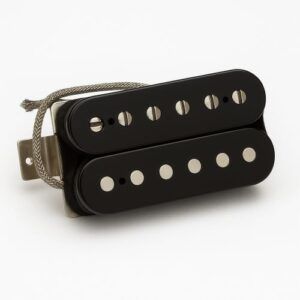
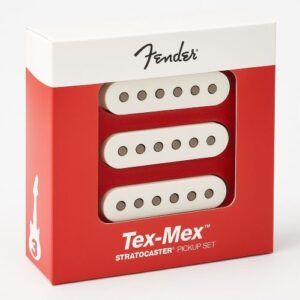
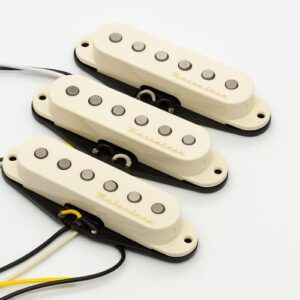
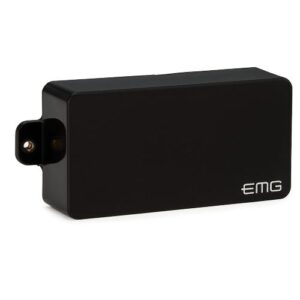
This is such a well-rounded guide to pickups! I love how you break down the impact of pickup type, output, magnet material, and even position on tone. It really shows how personal and nuanced choosing pickups can be. The reminder that blending different pickups (like in HSH or SSH setups) offers so much tonal flexibility is spot on.
A couple of questions for you:
When experimenting with pickup combinations, have you found any surprising blends that work well across multiple genres? For someone building their first kit, do you recommend starting with one type of pickup and upgrading later, or investing in a versatile combo right away? Also, how much does the wiring and electronics setup affect the tone compared to the pickups themselves?
Thanks for sharing this—it’s a great resource for anyone diving into guitar builds! ~Leahrae
Thanks so much, Leahrae! I’m really glad you found the guide helpful. Pickups are definitely one of the most fun (and complex) parts of shaping your guitar’s voice. Great questions, too! One combo that surprised me was pairing a lower-output vintage-style neck humbucker with a hotter bridge single coil… great balance and super versatile across blues, indie, and even light rock. For first-time builders, I usually recommend starting with a versatile setup like HSS or SSH. It gives you a wide tonal range without needing immediate upgrades. And yes, wiring and electronics definitely play a big role; things like pot values, cap types, and even wiring style (like 50s vs modern) can subtly but meaningfully shift your tone.
It’s all part of the fun!
Thanks again!
I really enjoyed this guide @Wayne. Clear, practical, and full of tone-shaping wisdom. I came to guitar late in life thanks to my son, who plays beautifully and sparked my curiosity. He is a natural, I am not. Learning about pickups has been a whole new world for me, and your breakdown helped connect the dots between tone, style, and setup. Thanks.
The idea that pickups are like the “vocal cords” of the guitar really stuck with me. It’s surprising how much nuance they bring to the sound—and how personal the choice can be.
I really appreciate the clarity you provided and the clear passion behind this post!
MarkA
Thanks so much, Mark! I’m really glad the guide helped make the pickup puzzle a little clearer. That “vocal cords” idea is one of my favorite ways to explain them, because it really drives home how much personality they give a guitar. It’s awesome that your son inspired you to pick up the instrument—natural talent or not, the fact that you’re exploring and learning is what matters most. Pickups can be a rabbit hole, but a fun one, and I’m happy to hear this breakdown made the connections between tone, style, and setup click for you. Keep playing, keep experimenting, and enjoy the journey!
~Wayne
Fantastic guide! I really appreciate how you break down the impact of pickup type and position—it makes it so much easier to understand how to shape tone.
Quick question: for someone building a versatile kit meant for both blues and rock, would you recommend starting with a mix of single coils and humbuckers, or sticking to one type and experimenting with position and output instead?
Thanks so much! I’m glad the guide made pickup type and position easier to grasp. For a versatile blues-and-rock kit, a common approach is to mix single coils and humbuckers. This gives you bright, snappy tones for blues and thicker, warmer tones for rock. Another option is sticking to one type and experimenting with position, height, and output; it can simplify wiring and still cover a lot of ground. It really depends on whether you want maximum tonal variety or a more streamlined setup.
Either way, playing around with position and output can really help you dial in your ideal sound.
Thanks again,
~Wayne